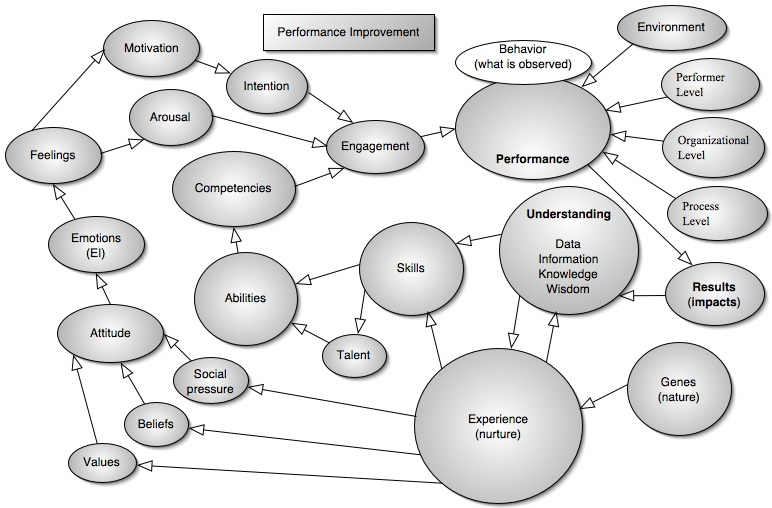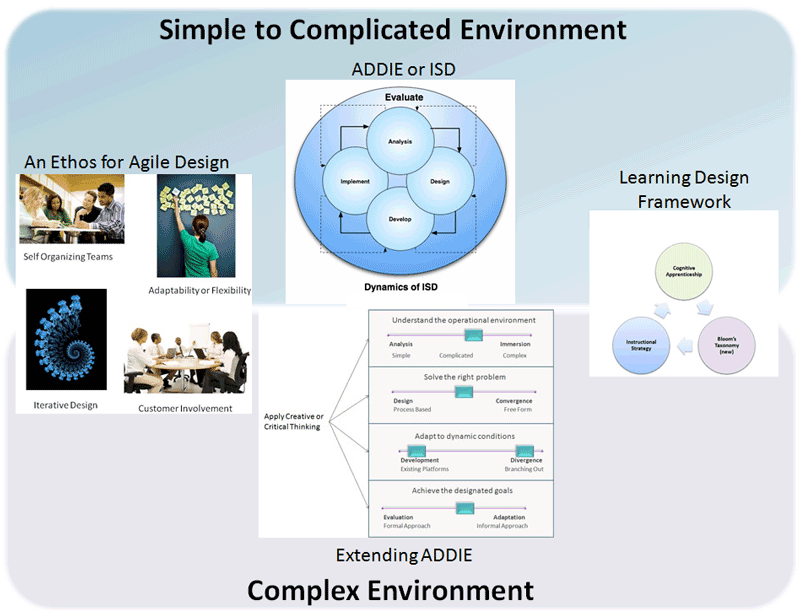Note: This site is moving to KnowledgeJump.com. Please reset your bookmark.
Emotional Intelligence and Performance
The first use of the term Emotional Intelligence (EI) appeared in the German publication Praxis der Kinderpsychologie und Kinderpsychiatrie by Leuner in 1966. In it, Leuner discusses women who reject their social roles due to them being separated at an early age from their mothers. He suggest that they had a low “Emotional Intelligence” (EI) and prescribed LSD for their treatment (after all, this was the 60s).
EI first appeared in English in a doctoral dissertation by Payne in 1986 (A study of emotion: Developing emotional intelligence, self-integration, relating to fear, pain, and desire). He advocated fostering EI in schools by liberating emotional experience through therapy.
In the early 90s, Jack Mayer, Peter Salovey, David Caruso, and a few others began some serious research into EI. However, it was Daniel Goleman who popularized the term in the late 90s when he came across their research during a stint as a science writer for the New York Times and wrote some books on the subject.
Revelle (1995) wrote that there are three aspects of human nature:
- How all people are alike
- How some people are alike
- How all people are unique
Thus EI becomes:
- A general quality of human beings possessed by every normal person.
- A quantitative spectrum of individual differences in which they can be ranked ordered.
- A qualitative, fine-grained account in which there are no comparisons between people.
EI nowadays seems to be mostly concerned with the second option above — ranking people on some type of emotional scale. This is perhaps because of the term itself. Intelligence is hard to define, but the means that we come to understand it is through various measurements of people. But up to this point, EI has come to mean a measurement of emotions. However, is raising one's EI desirable? Goleman's first book, Emotional Intelligence (1995), suggest that we are in a social crises and the way out of it is the teaching of EI in schools, and in a later book, the work place. Yet, there is little evidence to suggest that a high EI is desirable in the work place, and if it is, can it be taught (Matthews, Zeidner, Roberts, 2002)? Note that this may be changing as there is now some evidence that EI can be measured and that it does improve performance in the work place (O'Boyle, Humphrey, Pollack, Hawver, Story, 2010)
Daniel Goleman
Goleman describes EI as “abilities such as being able to motivate oneself and persist in the face of frustrations; to control impulse and delay gratification; to regulate one's moods and keep distress from swamping the ability to think; to empathize and to hope.” He also uses another interesting term to describe EI — character. Thus, Goleman's definition seems to be an all-encompassing view that covers traits, values, personality, motivation, and character. In fact, he almost defines it as everything that is not “IQ.”
Goleman's version of EI is known as a mixed-model in that it captures a diverse array of psychological phenomena. Although Goleman's idea of EI are most interesting, there is one aspect of his work that is quite disturbing — he claims to have gone back to his roots as an academic psychologist, however he still makes unfounded claims that have no empirical backing, such as EI having a higher predictive validity for performance in the work place than traditional measures of intelligence. There is absolutely no evidence that suggest this (Matthews, Zeidner, & Roberts, 2002).
Reuven Bar-On
Reuven Bar-On's definition of EI is similar to Goleman's as it uses clusters of personality traits: “an array of non-cognitive capabilities, competencies, and skills that influence one's ability to succeed in coping with environmental demands and pressures.” However, this begs the question of how it is possible to have a skill that is non-cognitive? Bar-On has developed an interesting instrument called the Emotional Quotient Inventory (EQ-i) that assesses five broad subtypes of EI:
- intrapersonal intelligence
- interpersonal intelligence
- adaptability
- stress management
- general mood
While the validation studies of his instrument seem to be quite impressive so far, it is not clear as to whether the EQ-i measures any construct that is not already being captured with other Instruments. For example, the California Psychological Inventory (CPI) and the Five Factor model of personality already have closely related scales.
Thus Bar-On's work seems to be almost a relabeling (marketing) effort rather than science. However, there is one aspect of his instrument that is quite interesting. With IQ, almost every literature/research shows that higher intelligence is related to a faster speed of information uptake/processing. However, with the EQ-i, people with high EI take longer to process emotional information. Thus, this relationship seems counter-intuitive — the better one is at EI, the longer one takes.
Note that Reuven Bar-On claims to have used a related concept, Emotional Quotient (EQ) even earlier; however, this was in an unpublished doctoral dissertation.
Mayer, Salovey, and Caruso
While Goleman and Bar-On almost seem to be trying to take the “intelligence” (cognitive) out of EI, Mayer, Salovey, and Caruso stress the intelligence portion of EI. They use a framework in which EI represents an intelligent system for in-putting and processing emotional information. It has four branches:
- emotional perception/identification
- emotional facilitation of thought
- emotional understanding
- emotional management
Rather than use a self-reporting EI instrument, they developed a performance-based instrument that is akin to those found in the intelligence literature called the Multifactor Emotional Intelligence Scale (MEIS) and then later developed a revised edition — MSCEIT (Mayer, Salovey, and Caruso Emotional Intelligence Test).
What is interesting about the MEIS is that it measures EI as a construct that is distinct from existing personality dimensions. However, while it has good measurement properties, it has to rely on the researcher to decide how the items are to be scored.
Thus, from their framework, we see that EI is composed of mental abilities and skills. It is also a hierarchical structure with Emotional Management as the main factor and the other three parts playing the roles of general supporting processes.
Lisa Gardner
Lisa Gardner, while doing an Australian study, writes:
“Emotional intelligence is your ability to recognize and express emotions in yourself, your ability to understand the emotions of colleagues.”
EI as Biological, Symbol, and Knowledge
What is interesting about the four definitions is that they seem to be approaching EI from three different perspectives:
- Biological - emotions are used to make intelligent decisions
- Symbol - the ability to recognize and express emotions in yourself and others
- Knowledge - emotional management
Prefrontal Cortex
The prefrontal cortex is associated with thinking about emotions and with self-control. In addition, it is also the key to thinking in words and controlling behavior, urges, emotions, and thought. Hence, it is the very simple act of verbalizing with others, in diaries, or in poems, to name a few activities, that allow us to cope, and thus grow with our emotions. This very simple act of “understanding” allows most emotions to be dealt with in a quite intelligent manner.

In addition, feeling (where we believe our emotional state is at) is largely thought to be a mapping of a particular body state by the mind in which a mental image is formed. Thus feeling is in essence an idea. And that idea resides within the person. This means that feeling is closely correlated with our thinking style.
References
Matthews, G., Zeidner, M., & Roberts, R. (2002). Emotional Intelligence: Science & Myth. Cambridge, Massachusetts: The MIT Press.
O'Boyle, E. H., Humphrey, R. H., Pollack, J. M., Hawver, T. H., Story, P. A. (2010). The relation between emotional intelligence and job performance: A meta-analysis. Journal of Organizational Behavior, 2010; DOI: 10.1002/job.714
Revelle, W. (1995). Personality processes. Annual Review of Psychology, 46, 295-328.



